Juli Watson
Graphic Artist, Photographer
Primary design concentration:
Graphic and Web Design
Most preferred tools for designing:
Sketchbook, Pencil, Eraser
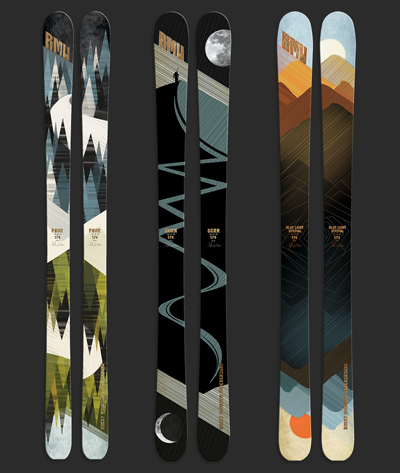
Graphics for Rocky Mountain Underground’s “Classic Skis”
How and why did you choose to become a designer?
Ever since I had a concept of work, I knew I’d work in a creative field, but I started in college as a Biology major, because I thought it was more practical … that didn’t last long. I switched my major to Art. I actually applied for the graphic design program, but I didn’t get in. After college, I went after photography full-time, and I started taking on design jobs on the side from friends and friends of friends. I was in my mid-twenties, and having paralyzing self-doubt about pursuing graphic design full-time, because I was self-taught and didn’t think I had the technical skills to land a job. During that time, all I did was take online classes and tutorials as much as I can. It helped boost my confidence, and then I decided to go after it, and do whatever I can to build a portfolio. That’s how it started.
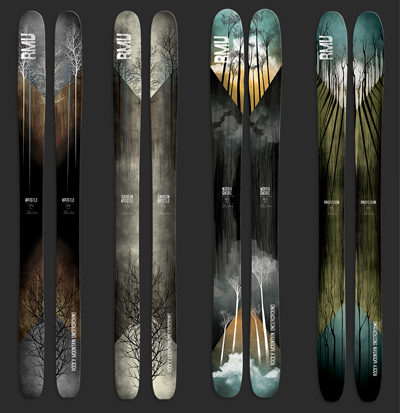
Graphics for Rocky Mountain Underground’s “Multi-Point Skis”
What are some of the challenges you encounter as a designer and how do you deal with them?
Designing isn’t interesting if it’s not challenging. I like to solve problems, so design-related challenges are the good ones. Tough challenges test my comfort zone and my personality. When I have to discuss my rate, negotiate, and convince a client that I’m best for the job, I gotta put on my big girl pants. It’s uncomfortable, but I deal with it by taking myself out of the situation. I try not too think too much about it or feed the fear, I just think about it as a learning experience—so what if you screw up, you gotta screw up a lot and be told “No” to learn and grow. The worst that can happen is that you don’t get the job or client, or you don’t nail that presentation, but you got that much better for next time.
What is your definition of an “elegant solution,” that is, good design?
I think it’s all about the concept and idea behind a design. A good-looking design doesn’t mean much, if it’s not based on a good concept. So when good ideas meet well-crafted elements, then I think that’s good design.
From skills to values, what makes a designer successful?
I think it’s very important to be a good listener and observer. Be open to collaboration and challenging yourself.
How do you stay motivated and grow personally and professionally as a designer?
I stay motivated by working on personal projects and by aspiring to reach new goals. I grow personally by going forward through a situation that gives me fear and anxiety. It’s mostly worth it. And directly relating to my work, I try out new processes to see if the designs turn out better.
For those aspiring to become a designer, whatever the discipline, what is your advice?
Don’t lose sight of improving your creativity, thought process, and ideas. If you are an Illustrator wiz, then all the better, but your creativity is what will get noticed. And I believe that work creates work, so whatever the area of design you want to get into, then create that kind of work for your personal projects. Don’t wait for someone to give you that kind of work, you have to show the kind of work you want to get. And charge for your work! Clients will appreciate the work more and respect you for it.
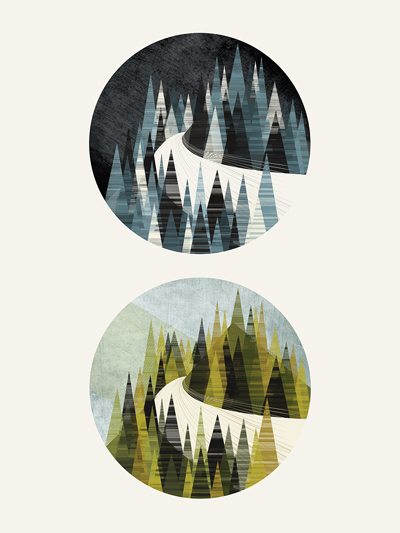
Seasonal illustration “Pine”
What is your quest in design, from a professional practice, education or evolution standpoint?
I’m big on designers having more of a say and contributing more of their creative talents at work. No designer wants to be handed a task and used as a puppet, because we know Photoshop or InDesign. I think there has been a shift where designers are considered invaluable contributors to the idea process, but I’d like to see it happening more. So, I try to relate that message to my clients and whoever will listen to me.
Previous: Maria Bruno Néo | Next: Ross Drakes
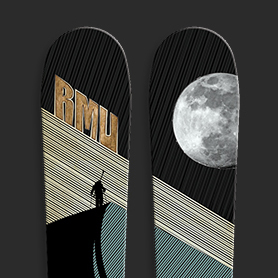
Support Design Feast via Patreon
This self-made project and its related efforts constitute a gracious obsession. The intention is to give a wholehearted and timely serving—as much as possible—of creative culture. If you gain a level of motivation, knowledge, even delight, from the hundreds of interviews plus write-ups here at Design Feast, and are able to contribute, please become a Patron with a recurring monthly donation. Thank you for your consideration!
Stay healthy and keep creating throughout the year!
Wishing you much success,
Nate Burgos, Content Creator & Publisher
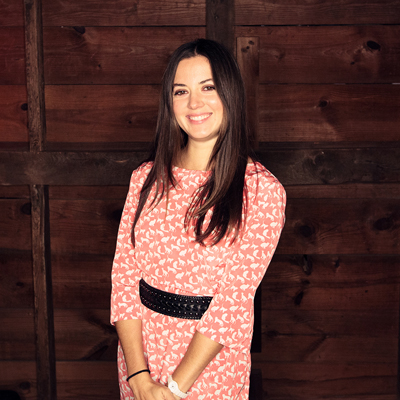

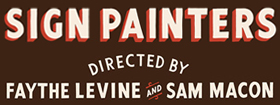
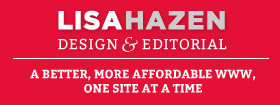
Comments
There are no comments yet.
Leave Your Comment